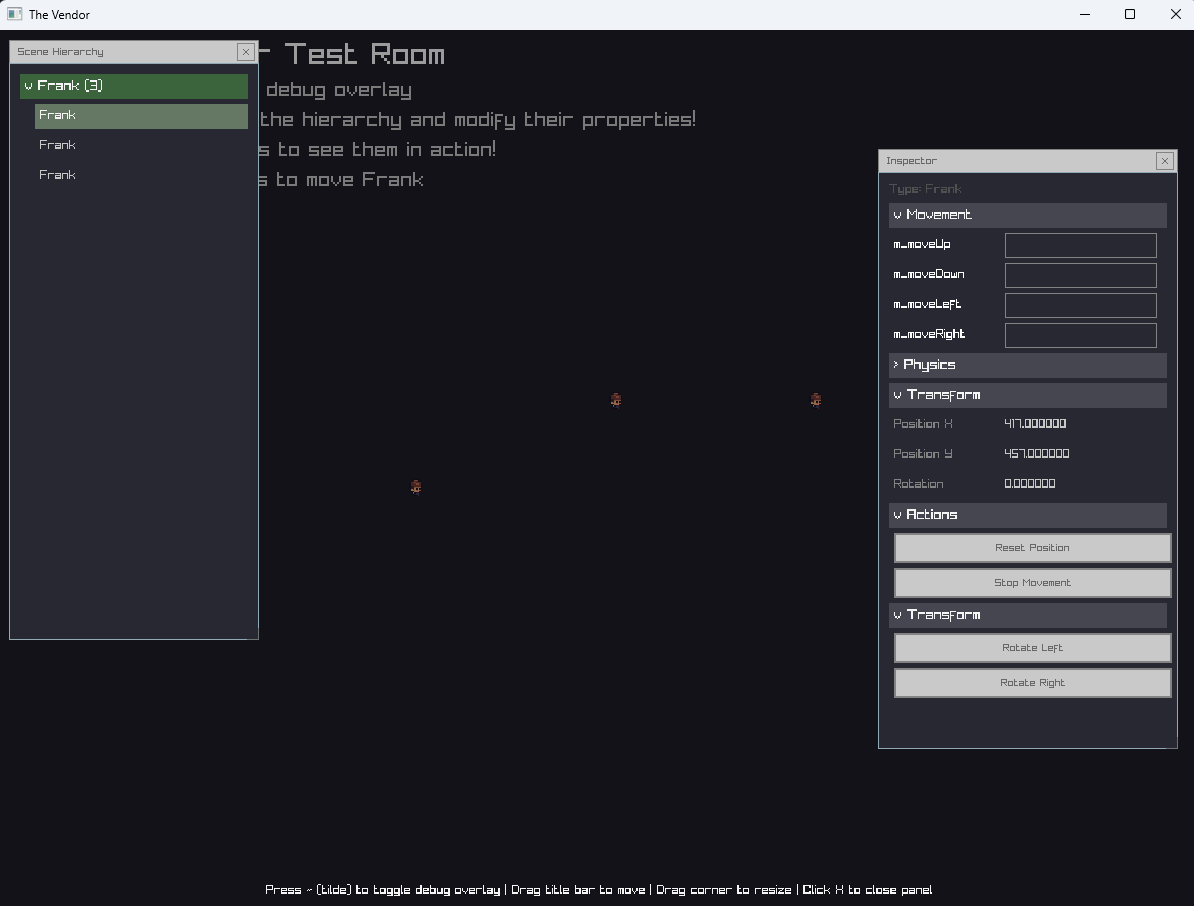Zixel: Sprint 3
Sprint 3
The third sprint of Zixel is in the books and went by quickly!
In just one week, I was able to tackle:
- Audio System Fundamentals
- Basic Particle System
- Camera System Enhancements
- Tileset Animations
- Object inspection overlay
Audio System Fundamentals
A basic audio system was created, using Raylib as the audio engine. Game code can now easily play sounds and stream music. All sounds are loaded from the resource pack. Which reminds me…still need to write a blog post about the resource pack system. In addition, volumes can be adjusted for music, sound effects, and a master volume. All volume settings are persisted.
Basic Particle System
What’s a game without some fun particle effects to jazz things up? Zixel now has a basic particle system.
Camera System Enhancements
Nothing too exciting, but there were some remaining camera features that needed to be addressed.
- Attach a Camera to an Object (follow)
- Zoom in/out
- Camera shake effect
Tileset Animations
A completely static tilemap is…not very interesting. Zixel now supports animated tilesets! Seen in the editor screenshot
below, tiles can now animate by combining tiles within a tileset.

Object inspection overlay
This one took a little longer than expected, but I like the direction.
Originally, I was thinking of adding an old-school debug console. A CLI that opened up when a key was pressed. Users
could type in commands to inspect objects, perform actions, and more. After working on a design for a while, I realized
it was going to be more of a pain to create the Object/CLI interactions than I’d hoped.
So instead, I decided to add an overlay that shows the properties of the selected object.
In the screenshot below, you can see that one of the “Frank” objects is being manipulated directly via the UI.
This will be very handy for debugging complex scenes during the game development process.

Sprint 4: What’s next?
With the core engine systems complete, Sprint 4 focuses on polish, optimization, and laying the groundwork for gameplay development.
This is the final sprint of Phase 0 before transitioning into actual game mechanics.
Areas of development include:
- Lighting, shading, post-processing effects
- Screen transitions & effects
- UI themeing and polish
- Memory manager improvements
- Dialog system
- NPC interaction framework
....and a few more odds & ends. It’s going to be a CRAZY sprint!
And away we go…